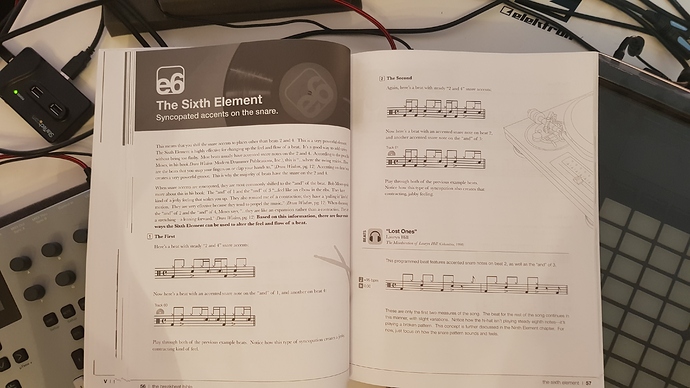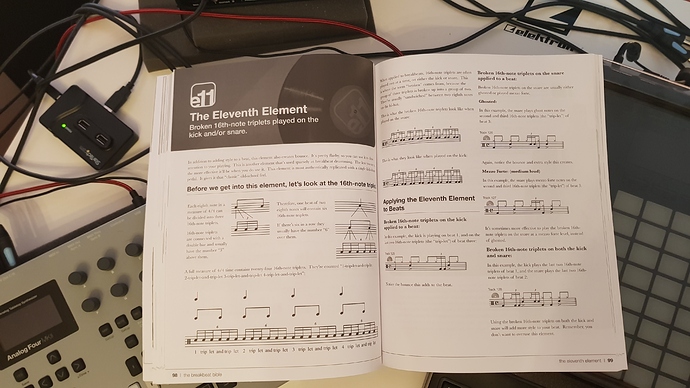an earlier suggestion of putting the Snare on 3 seemed quite an interesting idea, it would make for a different kind of feel to a groove, like a half-time vibe perhaps.
not sure how to make Trap beats, although love the sound of those 32nd note hihat tweaky trills. very natural, laid back and yet hi-tech, all at the same time.
currently i’m working on a downtempo broken beat, pretty stoked with a base-level interaction between the bassdrum and snare.
it’s a four bar groove and each bar has the Snare on beat 2 (a very usual placement), also sounding on beat “4-and” (Trig 15).
there is a main bassdrum sample, and a different lesser-volume supportive bassdrum. this seems to make it easier to somehow craft a subtle feeling to the syncopations.
main bassdrum Trigs on beat 1 (oh so unexpected) and then on beat “2-a” (Trig 8) … this pulse sequence is the same on Bars 1 and 3. Bar 4 is similar with an extra trig on beat 3-and.
Bar 2 just has a single trig on beat “2-e” (Trig 6).
the different, softer ‘supportive’ bassdrum does not sound on Bar 1 … then on Bar 2 trigs on beat “1-and”, beat “3-and”, beat “3-a” (Trig 12) … does not sound on Bar 3, and trigs once on Bar 4 - beat “3-e” (Trig 10).
it isn’t necessarily a less-tough sounding sample than the main bassdrum, although does have less “click” at the start of the sample. with some slight adjustments, it sounds 3 semitones lower than the main bassdrum… due to the main bassdrum sample being pitched upwards slightly. this is approximate.
at a tempo of 89bpm and a swing of 53, there is room for some different percussive elements and moderately spacious hihat work to explore the rhythmical options of broken beat sequencing.
anyway what i was intending to say was that the rhythm “signature” of the snare drum being on beat 2, beat “4-and” is just a slight adjustment, still familiar, and yet provides a bit more space … different to the snare being on beat 2 and 4, and yet close enough to hopefully not confuse the crowd at a gig, perhaps.





